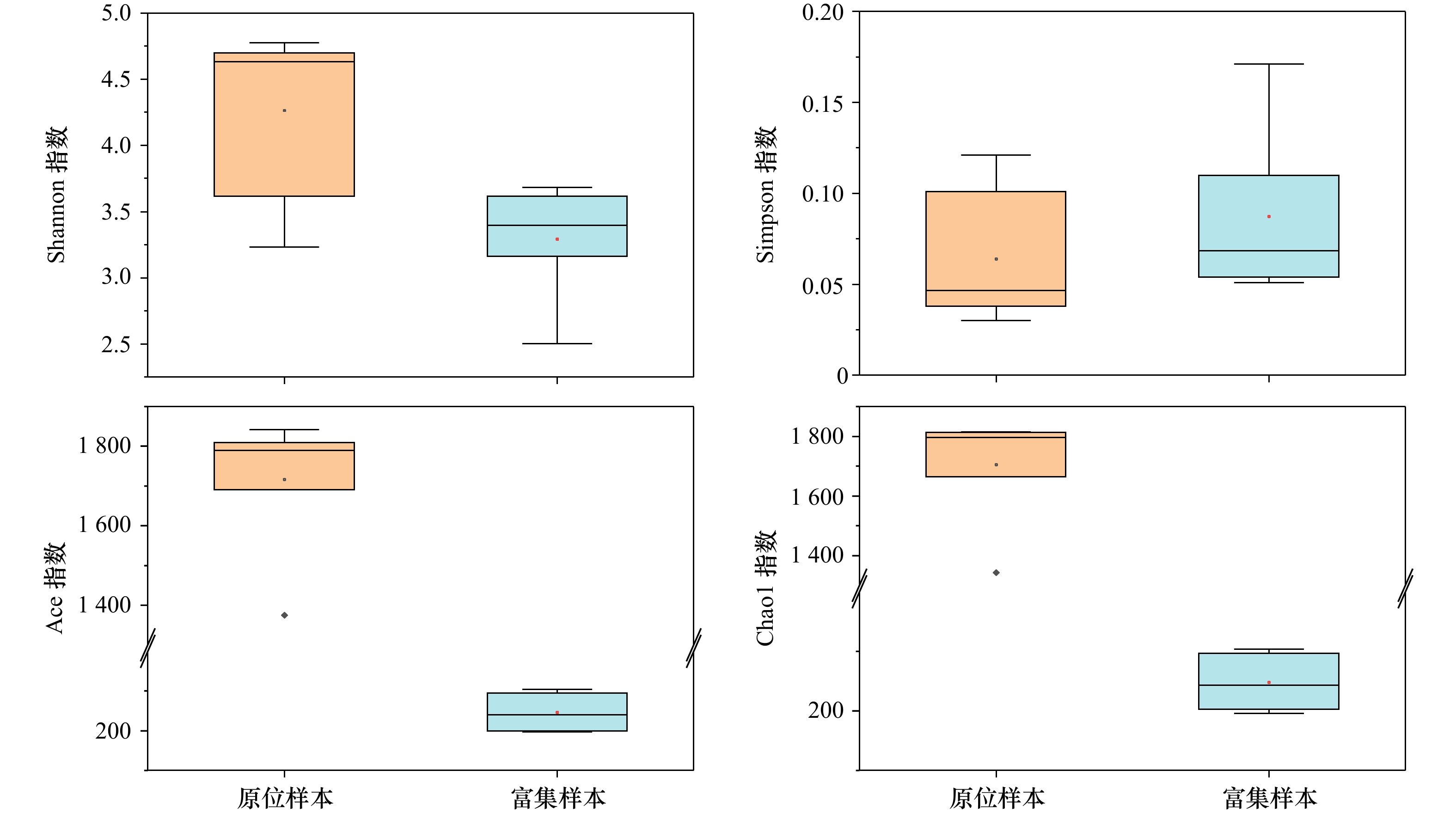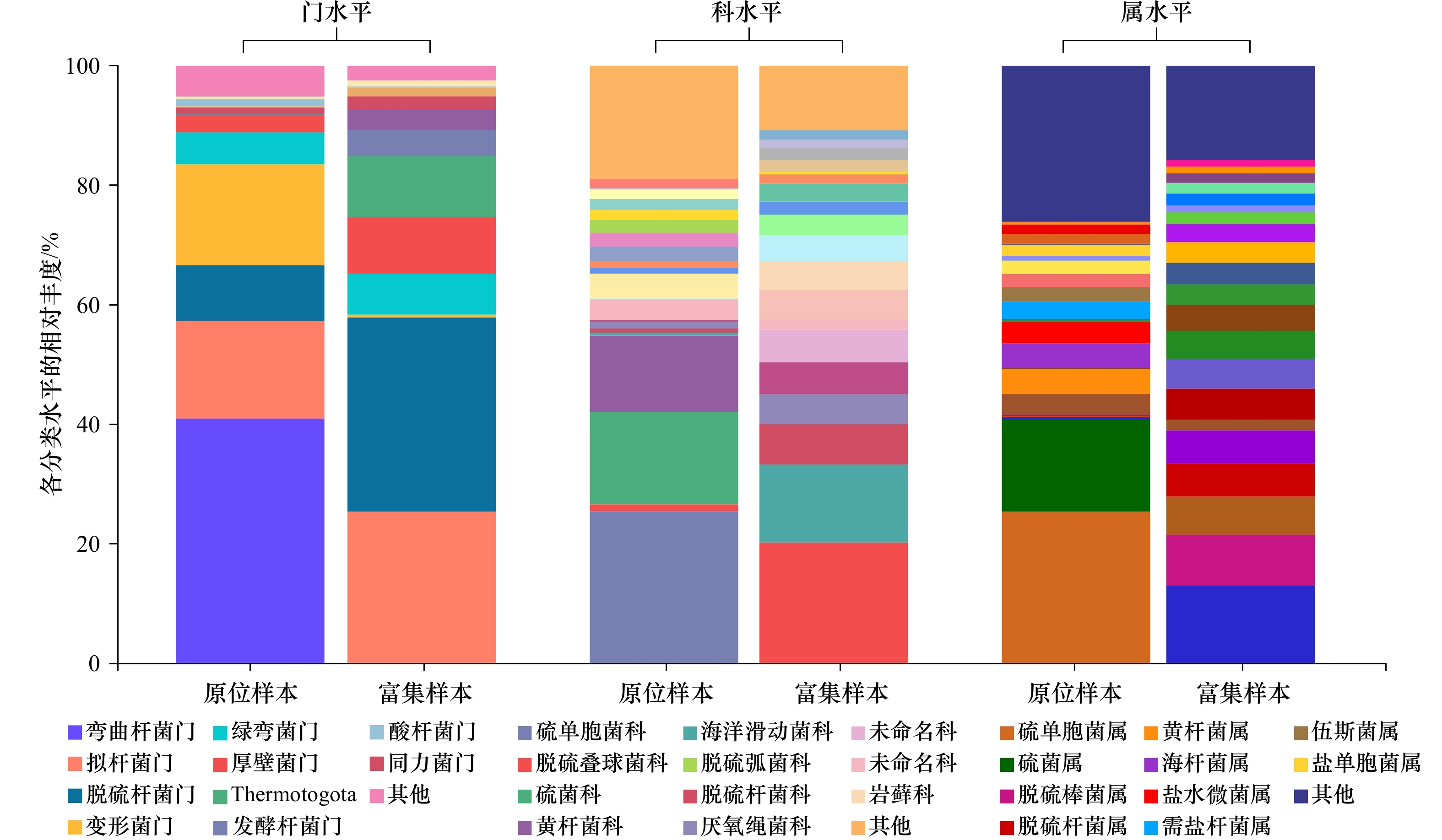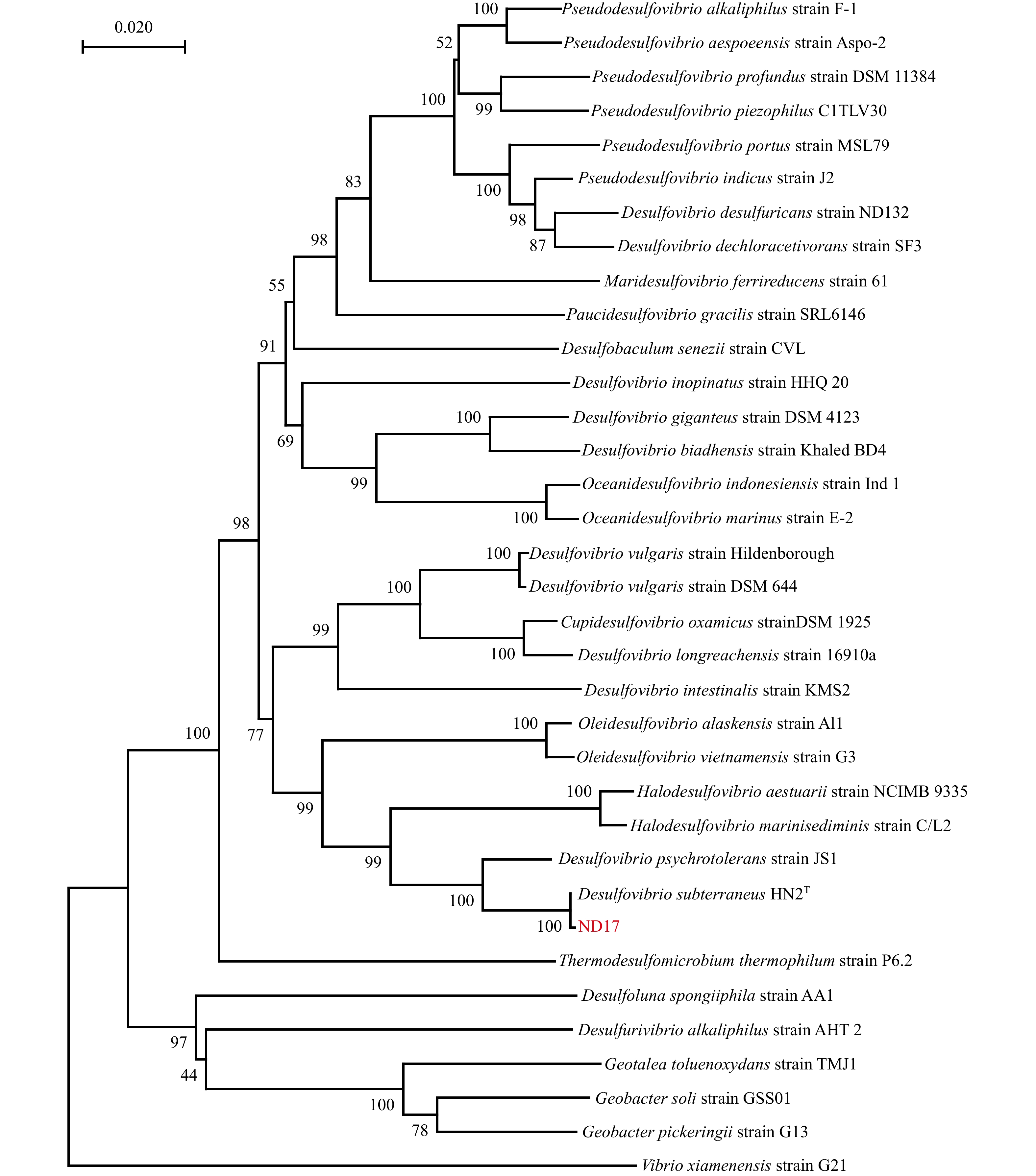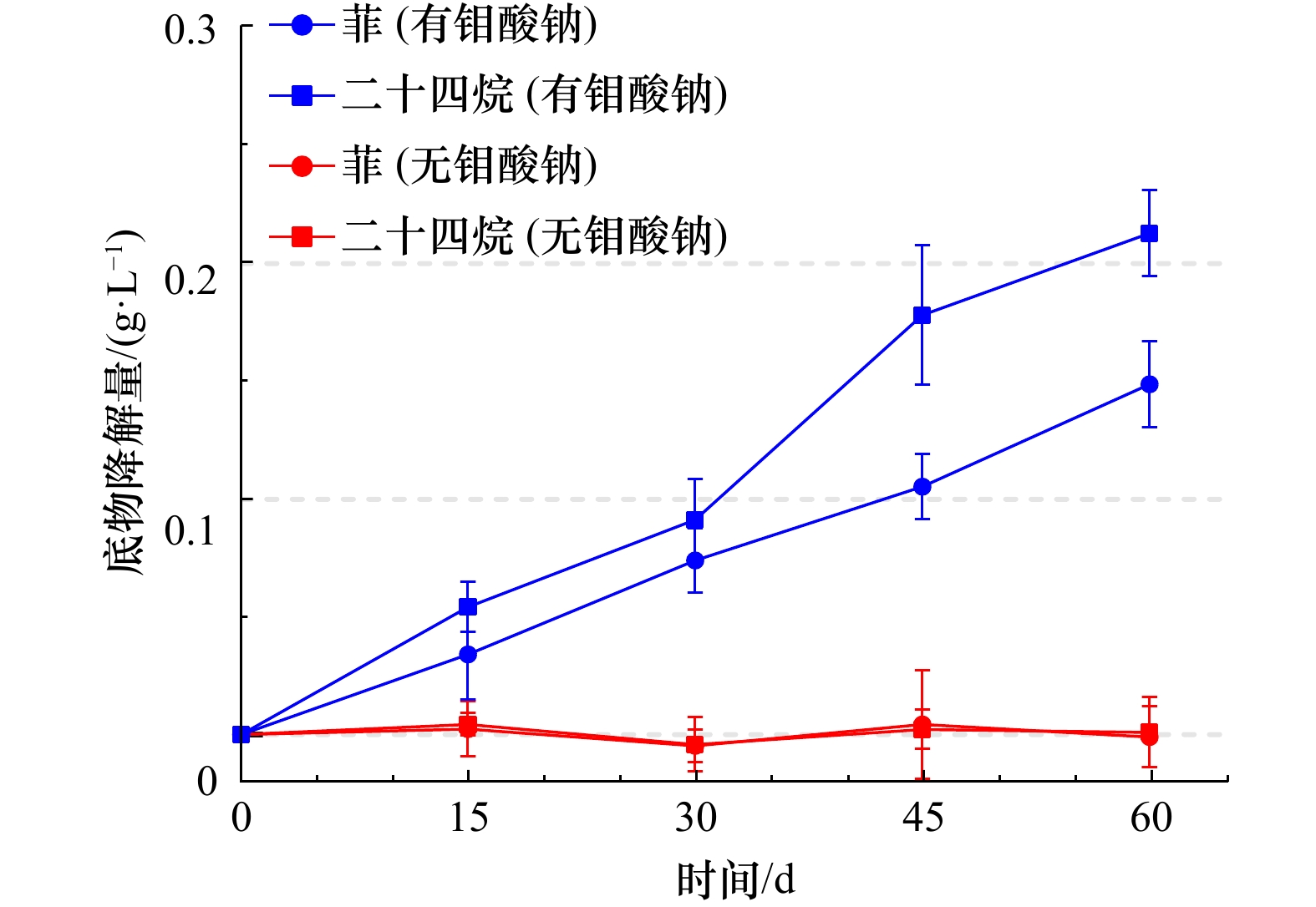| [1] |
Kim K H, Jahan S A, Kabir E, et al. A review of airborne polycyclic aromatic hydrocarbons (PAHs) and their human health effects[J]. Environment International, 2013, 60: 71−80. doi: 10.1016/j.envint.2013.07.019
|
| [2] |
张昌楠. 海洋环境中烃类污染物来源及控制途径[J]. 辽宁城乡环境科技, 2003, 23(3): 26−27, 29.Zhang Changnan. Sources and control approaches of hydrocarbon pollutants in marine environment[J]. Liaoning Urban and Rural Environmental Science & Technology, 2003, 23(3): 26−27, 29.
|
| [3] |
Mortazavi B, Horel A, Beazley M J, et al. Intrinsic rates of petroleum hydrocarbon biodegradation in Gulf of Mexico intertidal sandy sediments and its enhancement by organic substrates[J]. Journal of Hazardous Materials, 2013, 244−245: 537−544. doi: 10.1016/j.jhazmat.2012.10.038
|
| [4] |
高晓攀, 杜显元, 李兴春, 等. 石油降解菌处理污染土壤的研究进展[J]. 当代化工, 2015, 44(12): 2814−2817. doi: 10.3969/j.issn.1671-0460.2015.12.025Gao Xiaopan, Du Xianyuan, Li Xingchun, et al. Research progress of treating contaminated soil with oil-degrading bacteria[J]. Contemporary Chemical Industry, 2015, 44(12): 2814−2817. doi: 10.3969/j.issn.1671-0460.2015.12.025
|
| [5] |
Rueter P, Rabus R, Wilkest H, et al. Anaerobic oxidation of hydrocarbons in crude oil by new types of sulphate-reducing bacteria[J]. Nature, 1994, 372(6505): 455−458. doi: 10.1038/372455a0
|
| [6] |
Rabus R, Boll M, Heider J, et al. Anaerobic microbial degradation of hydrocarbons: from enzymatic reactions to the environment[J]. Journal of Molecular Microbiology and Biotechnology, 2016, 26(1/3): 5−28.
|
| [7] |
李贵珍, 赖其良, 闫培生, 等. 海洋石油污染及其微生物修复研究进展[J]. 生物技术进展, 2015, 5(3): 164−169.Li Guizhen, Lai Qiliang, Yan Peisheng, et al. Advance on marine petroleum pollution and microbial remediation[J]. Current Biotechnology, 2015, 5(3): 164−169.
|
| [8] |
曾军, 吴宇澄, 林先贵. 多环芳烃污染土壤微生物修复研究进展[J]. 微生物学报, 2020, 60(12): 2804−2815.Zeng Jun, Wu Yucheng, Lin Xiangui. Advances in microbial remediation of soils polluted by polycyclic aromatic hydrocarbons[J]. Acta Microbiologica Sinica, 2020, 60(12): 2804−2815.
|
| [9] |
Shin B, Kim M, Zengler K, et al. Anaerobic degradation of hexadecane and phenanthrene coupled to sulfate reduction by enriched consortia from northern Gulf of Mexico seafloor sediment[J]. Scientific Reports, 2019, 9(1): 1239. doi: 10.1038/s41598-018-36567-x
|
| [10] |
So C M, Young L Y. Isolation and characterization of a sulfate-reducing bacterium that anaerobically degrades alkanes[J]. Applied and Environmental Microbiology, 1999, 65(7): 2969−2976. doi: 10.1128/AEM.65.7.2969-2976.1999
|
| [11] |
Beller H R, Spormann A M, Sharma P K, et al. Isolation and characterization of a novel toluene-degrading, sulfate-reducing bacterium[J]. Applied and Environmental Microbiology, 1996, 62(4): 1188−1196. doi: 10.1128/aem.62.4.1188-1196.1996
|
| [12] |
Zhang Zuotao, Guo Haijiao, Sun Jiao, et al. Investigation of anaerobic phenanthrene biodegradation by a highly enriched co-culture, PheN9, with nitrate as an electron acceptor[J]. Journal of Hazardous Materials, 2020, 383: 121191. doi: 10.1016/j.jhazmat.2019.121191
|
| [13] |
Davidova I A, Gieg L M, Duncan K E, et al. Anaerobic phenanthrene mineralization by a carboxylating sulfate-reducing bacterial enrichment[J]. The ISME Journal, 2007, 1(5): 436−442. doi: 10.1038/ismej.2007.48
|
| [14] |
张涵, 孙珊珊, 董浩, 等. 铁还原菌降解石油烃的研究进展[J]. 微生物学报, 2020, 60(6): 1246−1258.Zhang Han, Sun Shanshan, Dong Hao, et al. Degradation of petroleum hydrocarbons by using iron-reducing bacteria[J]. Acta Microbiologica Sinica, 2020, 60(6): 1246−1258.
|
| [15] |
Leu A O, Chen Cai, Mcilroy S J, et al. Anaerobic methane oxidation coupled to manganese reduction by members of the Methanoperedenaceae[J]. The ISME Journal, 2020, 14(4): 1030−1041. doi: 10.1038/s41396-020-0590-x
|
| [16] |
孙娇, 张作涛, 郭海礁, 等. 多环芳烃厌氧生物降解研究进展[J]. 微生物学报, 2020, 60(12): 2844−2861.Sun Jiao, Zhang Zuotao, Guo Haijiao, et al. Progresses in anaerobic microbial degradation of polycyclic aromatic hydrocarbons[J]. Acta Microbiologica Sinica, 2020, 60(12): 2844−2861.
|
| [17] |
Chang W, Um Y, Holoman T R P. Polycyclic aromatic hydrocarbon (PAH) degradation coupled to methanogenesis[J]. Biotechnology Letters, 2006, 28(6): 425−430. doi: 10.1007/s10529-005-6073-3
|
| [18] |
齐小辉, 曹雪杰, 闫建芳. 多环芳烃的厌氧生物降解反应体系[J]. 绿色科技, 2017(16): 192−194.Qi Xiaohui, Cao Xuejie, Yan Jianfang. Anaerobic biodegradation reaction system of polycyclic aromatic hydrocarbons[J]. Journal of Green Science and Technology, 2017(16): 192−194.
|
| [19] |
Capone D G, Kiene R P. Comparison of microbial dynamics in marine and freshwater sediments: contrasts in anaerobic carbon catabolism[J]. Limnology and Oceanography, 1988, 33(4): 725−749.
|
| [20] |
Meckenstock R U, Annweiler E, Michaelis W, et al. Anaerobic naphthalene degradation by a sulfate-reducing enrichment culture[J]. Applied and Environmental Microbiology, 2000, 66(7): 2743−2747. doi: 10.1128/AEM.66.7.2743-2747.2000
|
| [21] |
李想, 周俊, 王婷, 等. 硫酸盐还原菌对多环芳烃降解的研究进展综述[J]. 净水技术, 2017, 36(3): 38−43.Li Xiang, Zhou Jun, Wang Ting, et al. Overview of research advances in degradation of polycyclic aromatic hydrocarbons by sulfate-reducing bacteria[J]. Water Purification Technology, 2017, 36(3): 38−43.
|
| [22] |
向廷生, 万家云, 蔡春芳. 硫酸盐还原菌对原油的降解作用和硫化氢的生成[J]. 天然气地球科学, 2004, 15(2): 171−173. doi: 10.3969/j.issn.1672-1926.2004.02.015Xiang Tingsheng, Wan Jiayun, Cai Chunfang. Treatment of crude oils using sulphate-reducing bacteria H2S formations[J]. Natural Gas Geoscience, 2004, 15(2): 171−173. doi: 10.3969/j.issn.1672-1926.2004.02.015
|
| [23] |
Yoon S H, Ha S M, Kwon S, et al. Introducing EzBioCloud: a taxonomically united database of 16S rRNA gene sequences and whole-genome assemblies[J]. International Journal of Systematic and Evolutionary Microbiology, 2017, 67(5): 1613−1617. doi: 10.1099/ijsem.0.001755
|
| [24] |
Edgar R C. UPARSE: highly accurate OTU sequences from microbial amplicon reads[J]. Nature Methods, 2013, 10(10): 996−998. doi: 10.1038/nmeth.2604
|
| [25] |
Kleindienst S, Herbst F A, Stagars M, et al. Diverse sulfate-reducing bacteria of the Desulfosarcina/Desulfococcus clade are the key alkane degraders at marine seeps[J]. The ISME Journal, 2014, 8(10): 2029−2044. doi: 10.1038/ismej.2014.51
|
| [26] |
Zhao Chao, Gao Zhaoming, Qin Qiwei, et al. Mangroviflexus xiamenensis gen. nov. , sp. nov. , a member of the family Marinilabiliaceae isolated from mangrove sediment[J]. International Journal of Systematic and Evolutionary Microbiology, 2012, 62(Pt8): 1819−1824.
|
| [27] |
Kumar S, Stecher G, Li M, et al. MEGA X: molecular evolutionary genetics analysis across computing platforms[J]. Molecular Biology and Evolution, 2018, 35(6): 1547−1549. doi: 10.1093/molbev/msy096
|
| [28] |
Saitou N, Nei M. The neighbor-joining method: a new method for reconstructing phylogenetic trees[J]. Molecular Biology and Evolution, 1987, 4(4): 406−425.
|
| [29] |
唐景春, 吕宏虹, 刘庆龙, 等. 石油烃污染及修复过程中的微生物分子生态学研究进展[J]. 微生物学通报, 2015, 42(5): 944−955.Tang Jingchun, Lü Honghong, Liu Qianglong, et al. Recent review on the microbial molecular ecology during contamination and remediation of petroleum hydrocarbons[J]. Microbiology China, 2015, 42(5): 944−955.
|
| [30] |
Lü Min, Luan Xiaolin, Liao Chunyang, et al. Human impacts on polycyclic aromatic hydrocarbon distribution in Chinese intertidal zones[J]. Nature Sustainability, 2020, 3(10): 878−884. doi: 10.1038/s41893-020-0565-y
|
| [31] |
Qian Youfen, Xu Meiying, Deng Tongchu, et al. Synergistic interactions of Desulfovibrio and Petrimonas for sulfate-reduction coupling polycyclic aromatic hydrocarbon degradation[J]. Journal of Hazardous Materials, 2021, 407: 124385. doi: 10.1016/j.jhazmat.2020.124385
|
| [32] |
Zhang Zuotao, Sun Jiao, Guo Haijiao, et al. Investigation of anaerobic biodegradation of phenanthrene by a sulfate-dependent Geobacter sulfurreducens strain PheS2[J]. Journal of Hazardous Materials, 2021, 409: 124522
|
| [33] |
孙超, 曾湘, 李光玉, 等. 红树林沉积物中天然多聚有机物厌氧降解菌多样性与细菌新类群分离[J]. 微生物学报, 2021, 61(4): 987−1001.Sun Chao, Zeng Xiang, Li Guangyu, et al. Diversity of anaerobic degrading bacteria for natural organic polymers in mangrove sediments and isolation of novel groups of bacteria[J]. Acta Microbiologica Sinica, 2021, 61(4): 987−1001.
|
| [34] |
齐明明, 李建洋, 刘宪华, 等. 近海沉积物与水体中天然大分子聚合物降解菌的原位富集与多样性分析[J]. 应用海洋学学报, 2020, 39(4): 566−573. doi: 10.3969/J.ISSN.2095-4972.2020.04.013Qi Mingming, Li Jianyang, Liu Xianhua, et al. In situ enrichment and diversity analysis of natural macromolecular polymer degrading bacteria in offshore sediments and water bodies[J]. Journal of Applied Oceanography, 2020, 39(4): 566−573. doi: 10.3969/J.ISSN.2095-4972.2020.04.013
|




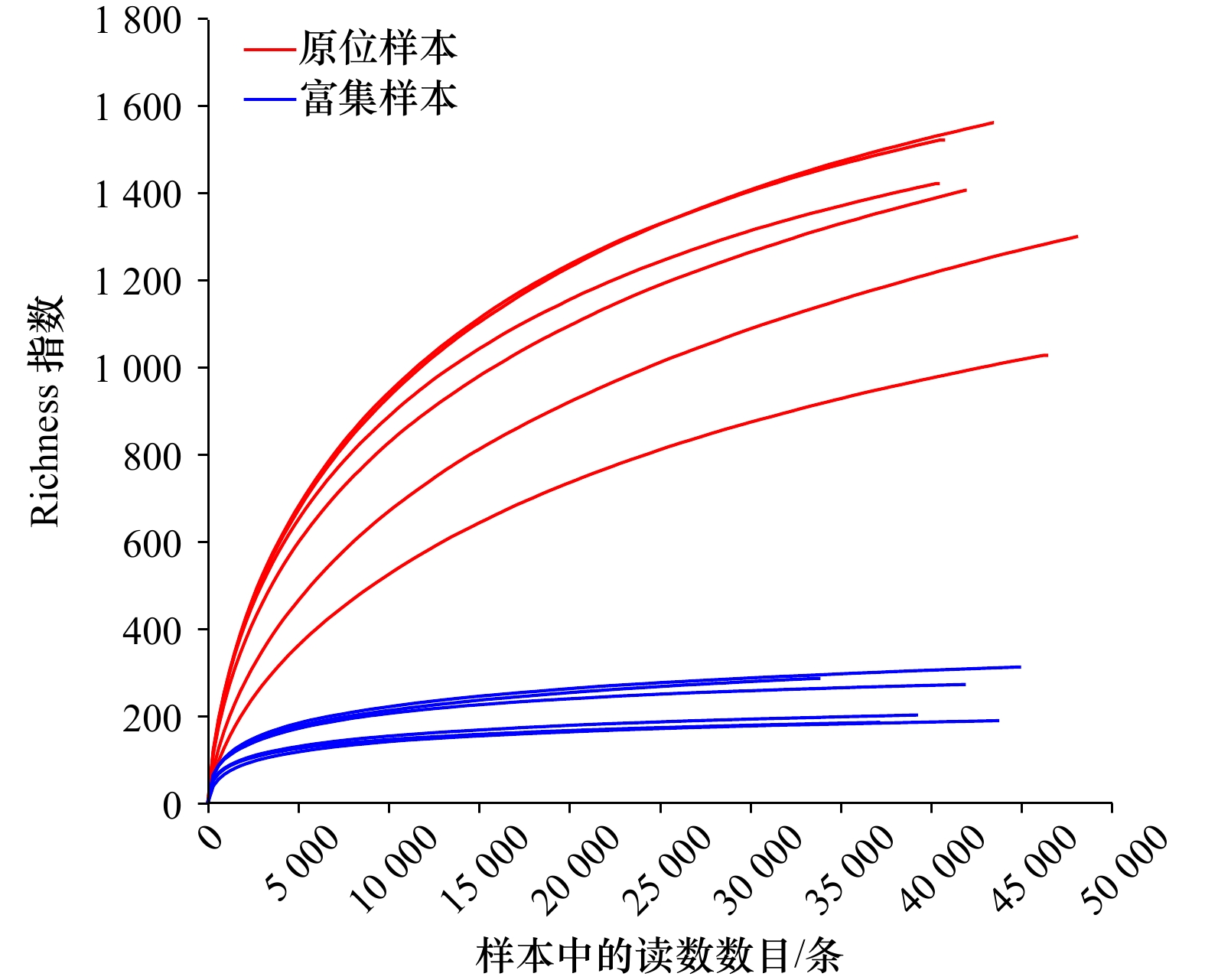
 下载:
下载:
